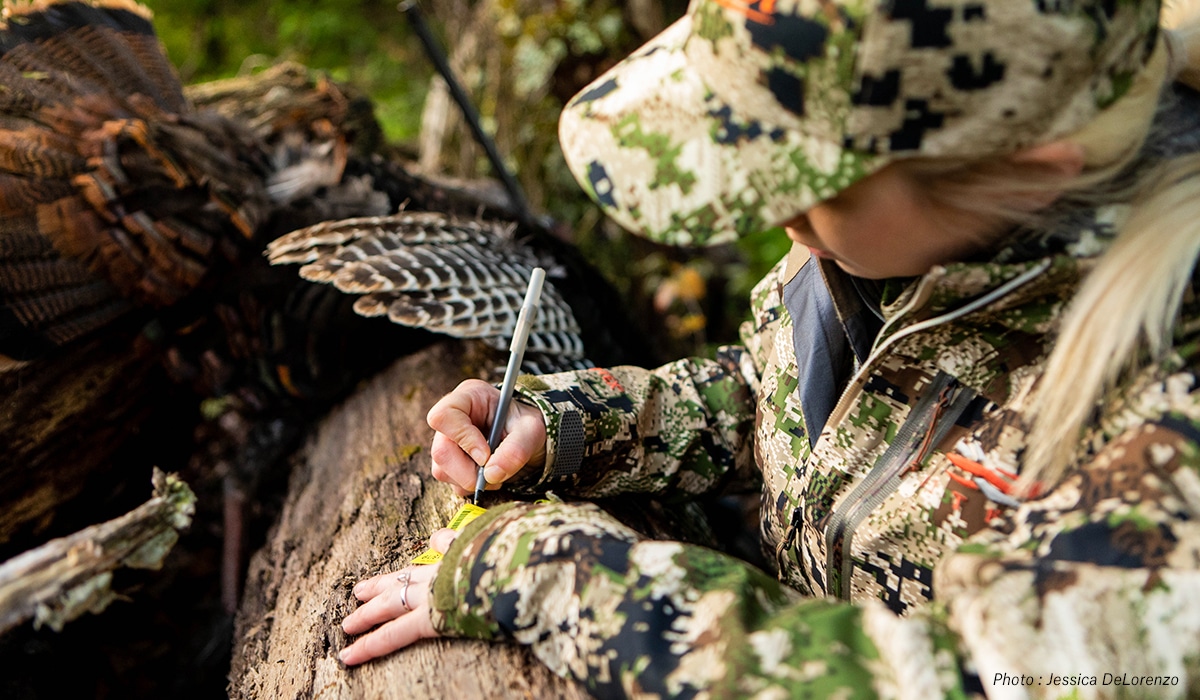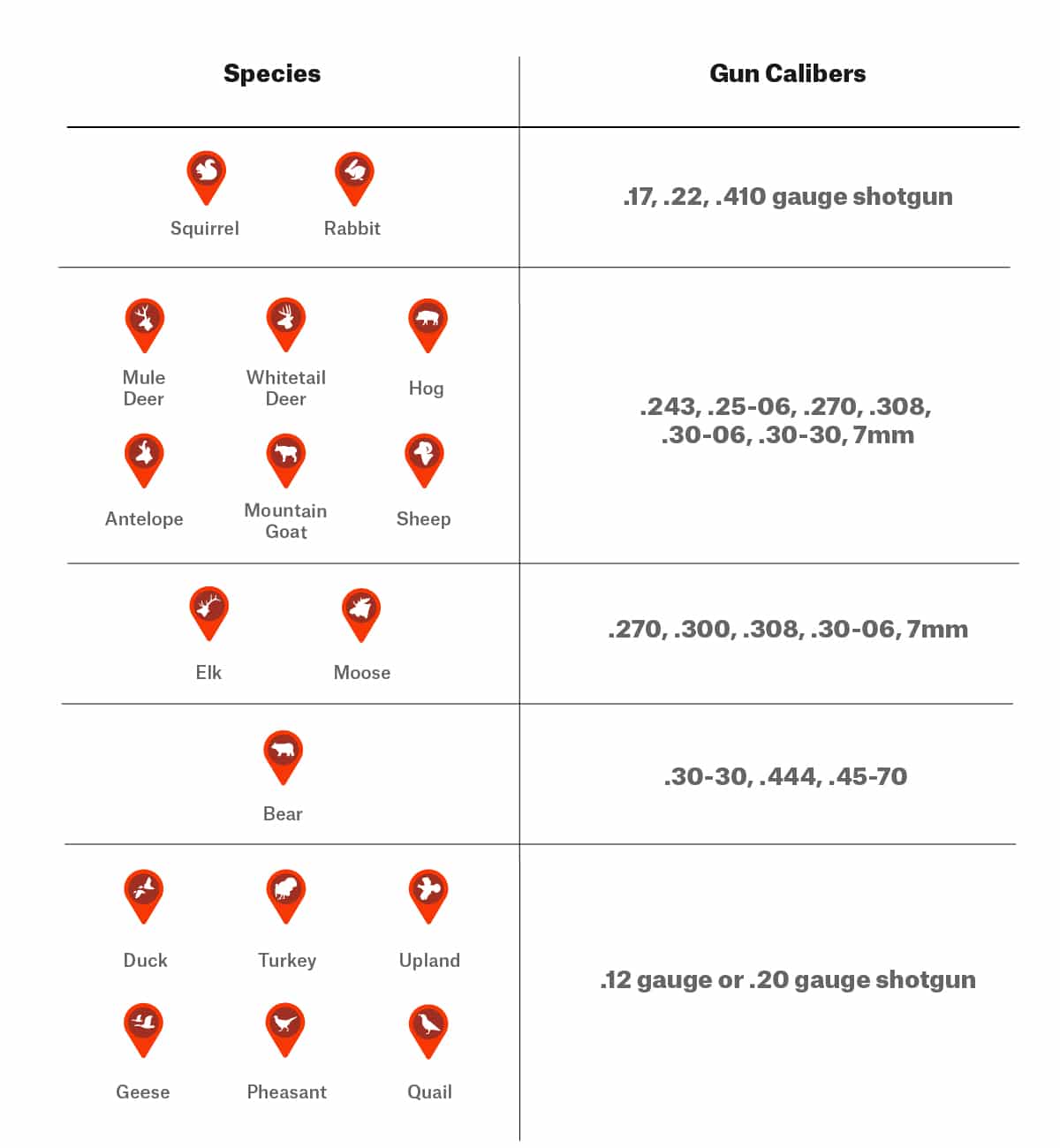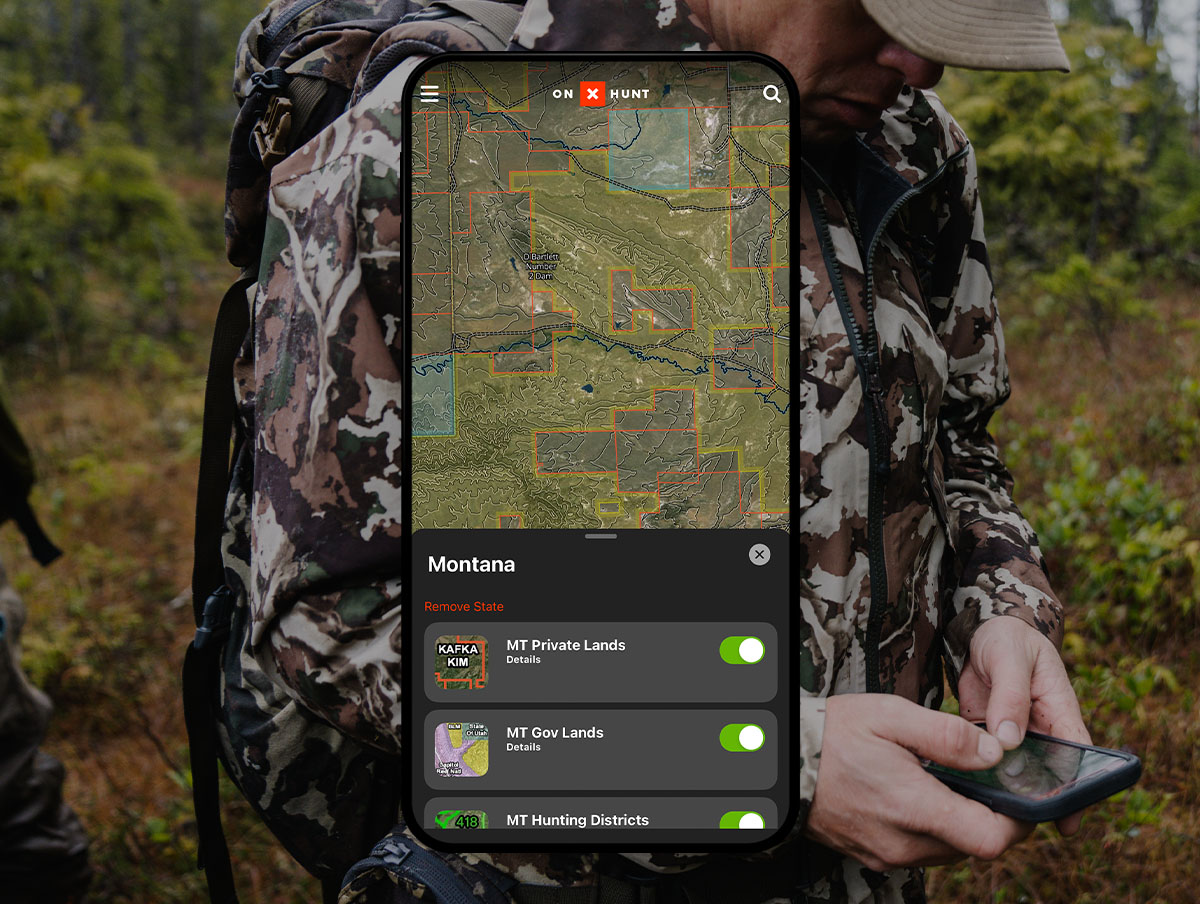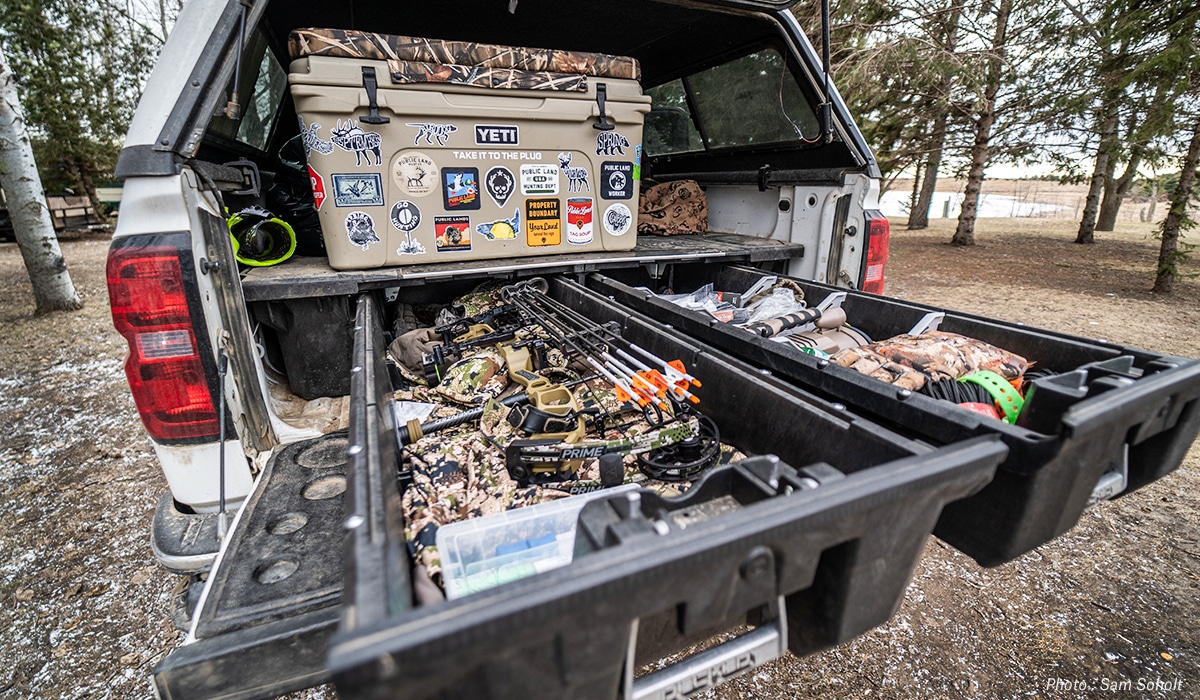Interested in hunting but not sure where to start? You’re not alone. Many states are experiencing a surge in new adult hunters who are eager to learn how to start hunting. In this article, we cover all the basics that will get you on a step-by-step path to a successful season.
Know the Basics of Hunting Regulations
If you’ve decided to make hunting part of your life, congratulations. From planning to scouting, and hunting, harvesting, and processing, this new and fantastic journey will require energy and a deep commitment to ethical practices. But the rewards are immeasurable, so let’s get started.
Tags, Licenses, and Permits: What Do They Mean?
A hunting license is an annual requirement that says you have the training, legal standing, and ability to hunt in a particular state at particular times for single or multiple species. Generally, they are the foundation of your permission to hunt game and are prerequisites for holding tags and permits. Keep in mind each state has its own set of regulations released annually. It’s important to check them for what’s required to hunt.
You may be purchasing a rifle hunting license and/or a bowhunting license as a resident or non-resident. Just having a license, however, does not always mean you can hunt any in-season game animal. You’ll likely need a tag too.
Hunting tags are the physical pieces of paper you attach to an animal after you’ve harvested it. They are specific to each species you hunt. Elk hunters need elk tags. Deer hunters need tags for whitetail or mule deer. Waterfowl hunters need a Federal Duck Stamp. To hold a tag, you must have a valid hunting license.
Some tags you can buy at a local sporting goods store or online; some you have to draw in a lottery system. Some states offer tags for specific sexes. In Montana, for instance, an “A” tag, or general tag, might allow you to harvest a bull elk or antlered deer, but a “B” tag might allow you to harvest a cow elk or doe.
Permits work in tandem with tags and hunting licenses, as they give you permission to hunt certain animals in certain districts at certain times. The nomenclature for tags and permits can get confusing at times. Not all states use the same terms the same way. Pennsylvania, for instance, sells permits, not tags, but many western states use both tags and permits. It’s best to check with your local wildlife management office to understand the proper terms.

Hunting Seasons, Explained
All hunting seasons have a purpose and were designed with conservation in mind. Seasons are planned, changed, and managed at the state level by wildlife agencies. By limiting the number, sex, and types of species that can be harvested, and when, the state can effectively control an animal’s overall population health.
The timing of most hunting seasons factor in a species’s biology and behavior. Deer season, for example, is generally in the fall and winter and covers the rut, which is when bucks are mating with does. If the hunting season for deer was much earlier, it would interfere with fawn rearing. Fawns are dropped in late spring or early summer and they need time to learn the things they need to know to make it on their own. Also important for deer season is that by fall bucks have grown back the antlers they’ve shed in spring, making them easy to identify their sex, and during the rut, they move around much more than in spring or summer.
You’ll see this with turkey season too, which occurs in the spring (and sometimes in the fall). Springtime is when male turkeys (toms) are ready to fertilize eggs, so toms are looking for their hens. Hunters have an advantage here to call in toms by sounding like a hen or like another tom looking to challenge for dominance over a flock.
Migratory bird seasons are usually synced with migration, plainly enough. Each state’s season is timed for when ducks and geese are expected to be passing through on the way to their summer breeding grounds.
There’s a lot more that goes into designating hunting seasons, of course, but the most important thing to remember is it’s a hunter’s responsibility to adhere strictly to the rules and regulations set by a governing wildlife agency or department.
You may also notice when you’re thumbing through your state’s hunting regulations there are different seasons for different weapons. Hunting with a bow (usually a compound bow or traditional bow) most often occurs before and/or after rifle season. The main reason bow season and rifle season do not overlap is for hunter safety. Hunting with a bow requires getting closer to an animal to make a shot, which means a hunter needs to be camouflaged. This is why we see some state laws requiring hunters to wear bright orange during rifle season but not during bow season. High-visibility orange lets rifle hunters be seen by other rifle hunters.
Curious if deer see colors? They do, just not as humans see them. Deer are less sensitive to long-wavelength colors (like red and orange). Science suggests those colors appear gray or brown to deer.

Hunting for Beginners: From Weapons to Marking Waypoints
Now that you have a basic understanding of regulations and hunting seasons we’ll move on to weapons, hunter safety, and how to start planning for your first hunt.
The first decision you’ll need to make with weapons is deciding if you want to hunt with a firearm or a bow. Many hunters use both, but if it’s your first time hunting it will be easier to master one first. And no matter which you choose, plan on spending months practicing shots before heading out on a trip. Then practice as much as you can between seasons.
Although there are crossover skills between bow hunting and rifle hunting, each one is substantially different from the other. More people start with rifle hunting.
Most guns are referenced first by their caliber then by their maker. A .300 Win Mag is short for a Winchester Magnum rifle in a .300 caliber. The caliber is the size of a rifle or handgun’s bore (ie. the inside of the barrel) measured in hundredths of an inch, thousandths of an inch, or millimeters. For example, the bore of a .270-caliber rifle measures 270/1000ths of an inch in diameter, and it would be larger than a .243-caliber rifle.
There are a handful of oddities among calibers, however. For instance, a .30-06 (pronounced “thirty aught six”) caliber rifle is named as such because it has a bore diameter of .30” (7.62mm), but the “06” is a reference to the year 1906 when it became the official ammunition of the US military. A .30-30 has the same bore diameter as a .30-06 but the second “30” refers to the amount of smokeless gun powder the cartridge used when it debuted in 1895. The .30-30 was also never used by the military and has the distinction of being called one of America’s first hunting cartridges made for civilian sportsmen.
If you’re considering a firearm for hunting, here’s a glimpse of common gun calibers used for different species:
- Small Game and Varmint—.17, .22, .410 gauge shotgun
- Deer, Hog, Sheep, or Goat—.243, .25-06, .270, .308, .30-06, .30-30, 7mm
- Elk, Moose—.270, .300, .308, .30-06, 7mm
- Black Bear—.30-30, .444, .45-70
- Turkey, Migratory, or Upland Birds—.12 gauge or .20 gauge shotgun
Hunter Safety
Hunter safety is mandatory for new hunters nearly everywhere in North America. You must pass an online or in-person safety course before you are allowed to purchase a hunting license. Some states’ courses only take hours to complete online; others might require an entire day (or more) in the field. Take as much training here as you can. It can prevent accidents and save lives.
Certified courses will instruct you about hunting ethics, equipment, habitat conservation, firearm safety and handling, hunting laws and regulations, wilderness survival skills, wildlife identification and management, and much more. Knowing these things will give you confidence in the field. It’s quite easy to find information about hunter safety in your area by searching online or calling your local wildlife agency.

Finding a Place to Hunt
Something, someone, or some place must have inspired you to start hunting. Maybe you’ve heard a friend talk about their adventures, or you live in an area where people hunt, or you’re planning a trip to a state with hunting opportunities. These are good places to start thinking about where you will be hunting. There is no book that will tell you exactly where animals will be, or when they will be there, but there are sources (including this website) that will help you figure it out. Let’s cover a few broad distinctions of places you might hunt.
Public or Private Land
Finding public or private land to hunt is why onX Hunt was created. The Hunt App shows boundaries between public properties and privately owned parcels. Some hunters use the landowner information in the App to knock on doors or write letters asking permission to hunt. This is certainly a very good option for a lot of people.
But new hunters often turn to public lands for their first hunts. Public lands are easy to access, and most are open to some form of hunting, including national forests and some national parks. Each state is divided into different hunting units, sometimes called Game Management Units (GMUs), hunting districts, or zones. We have a list covering all the U.S. states’ units.
What Makes Good Hunting Land?
Animals like the same things we like—food, water, and a place to rest. Good hunting spots usually have a lot of one of these things or a little bit of everything. Look for places that offer cover (ie. protection) for animals, including tree cover, thick foliage, or geographic features that would make it hard for a predator to get to them. Look for water sources, anything from lakes to seasonal creeks. Food can be nearby agricultural crops, native browse, or fruit and nut trees.
Some of these can be found and scouted online. The onX Web Map is an excellent tool to use for e-scouting and marking Waypoints for places you’ll want to check out in person. Pro tip: mark any spots that look interesting on the Web Map, and when you get in the field to check them out you can swap out the Waypoint color based on what you find. Don’t like the spot you marked? Change it to red or yellow. Love the spot and think it’s a spot to hunt? Change it to green or black.

Your First Hunt
You’ve done your research, taken hunter safety, got your licenses and tags, practiced shooting your weapon, and scouted some spots you think hold game. It’s go time. Here are some tips to make your day of hunting more enjoyable and safe.
Hunting Checklist
Every hunter should carry a few must-haves when heading into the field. We cover the hunter’s checklist of essential hunting gear in more detail here, but in short order, never leave the house without these in your pack:
- Sharp hunting knife
- Water, lots of it
- First aid kit
- Good boots
- Proper layers and rainwear
- Navigation tools
- Flashlight
- Emergency supplies (water purification system, extra food, shelter)
Getting Out There
The more time you can spend in the field, the better the chance for success you’ll have. If you’re after big game like deer and elk, you should know they are both crepuscular and diurnal animals. This means they are active in the twilight hours of dawn and evening (crepuscular), but they are also active during the day (diurnal).
Since legal shooting light is typically one-half hour before sunrise until one-half hour after sunset, you should be ready and in place well before sunrise. Getting to the spots you’ve scouted early will also help you beat out some of the other hunters who might be heading to the same public lands as you are.
Remember, any animal you down you’ll have to get out, so if you plan on hiking back seven miles into the backcountry you’ll need to plan for getting your game back to your truck. Sometimes you can hunt smarter, not farther, than other hunters. Take your first few hunts slowly.
Hunting is strenuous and hydration can be a life or death factor. Drink throughout the day to keep your energy up, body temperature stable, and mind clear. If you’re thirsty, you’re dehydrated.
I Got Something, Now What?
If you harvest an animal, large or small, at the very least you’ll need to field dress it and get the meat cooled or in a cooler as quickly as possible. A deer’s living body temperature is 101 degrees Fahrenheit at rest. Getting the meat down to or below 40 degrees Fahrenheit is vital because bacteria in the meat can double every 20 minutes when it’s above 70 degrees Fahrenheit.
Field dressing an elk or deer is very different from skinning a rabbit, but the essence of what needs to be done is to remove the organs from the animal because they are the first to spoil and could cause your animal to become inedible. Even if you plan to take your animal to a local processor, you must field dress it.
There are many good techniques for field dressing big game. This one, “How to Gut a Deer” from Meateater, is straightforward and a good place to start. You can also try the gutless method. If you’re hunting small game, Meateater also has a guide for field dressing squirrels.
Field dressing, butchering, and properly cooking your game are some of the most useful skills a hunter should have. Many new hunters are starting to hunt as a way to connect to the food they eat. Being able to process your entire animal deepens that connection.
Where To Go From Here
Hunting is, or should be, a lifelong endeavor. If you’ve been out a couple of times and have questions, or you want to find someone who will take you out on your first hunt, you should start connecting with other hunters. You’ll find them around your local gun and archery stores, in online forums, and as part of reputable wildlife conservation and land access groups. Joining a conservation group or two should be high on your list of priorities as a new hunter. Most of them have knowledge that will help new hunters and ways to better understand the animals you’ll be hunting. If you’re new to onX Hunt and want to connect with fellow hunters via social media, check out our Facebook and Instagram pages.
Happy hunting.